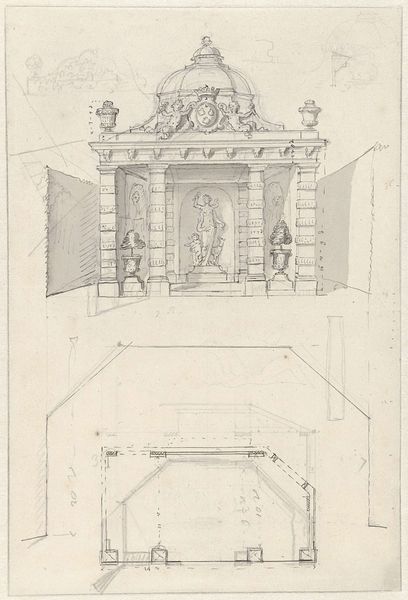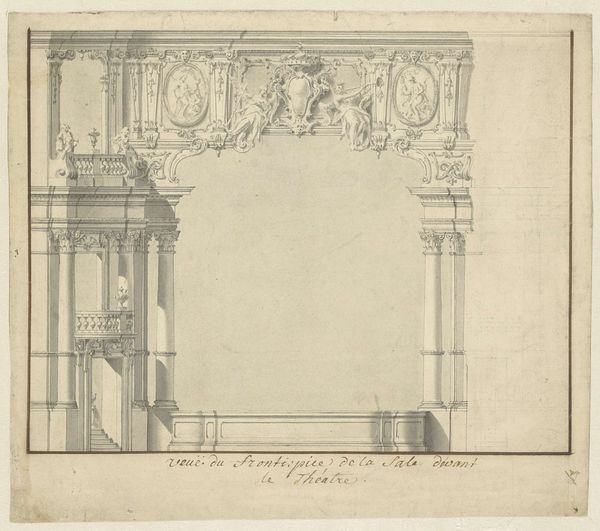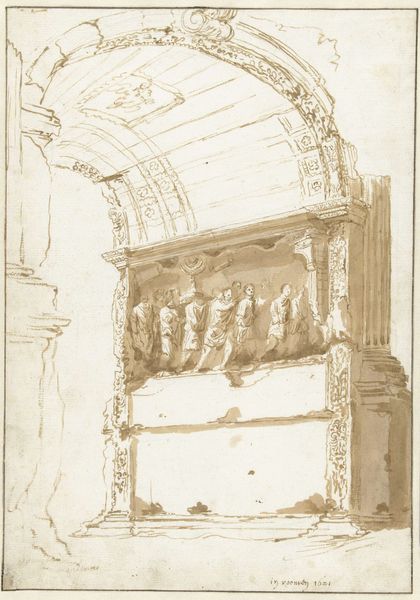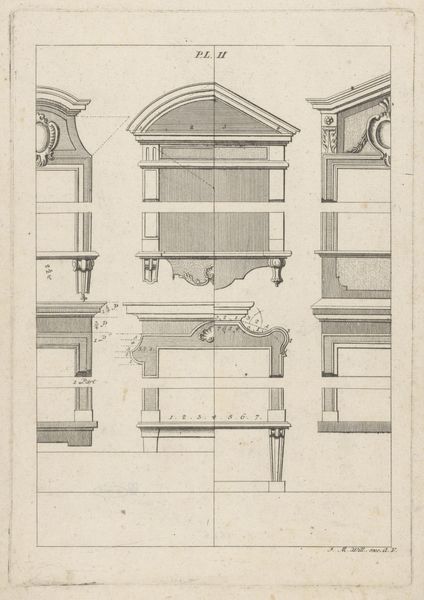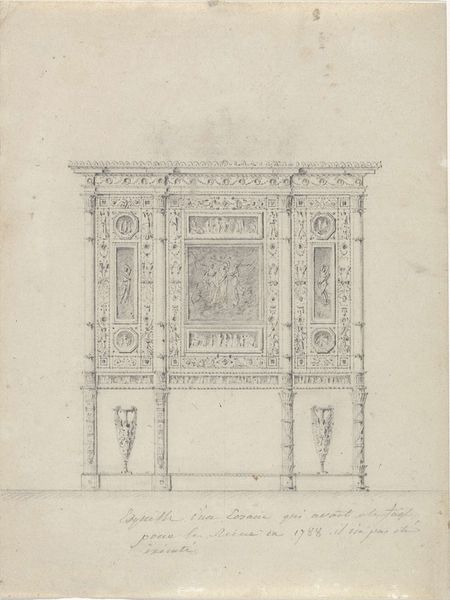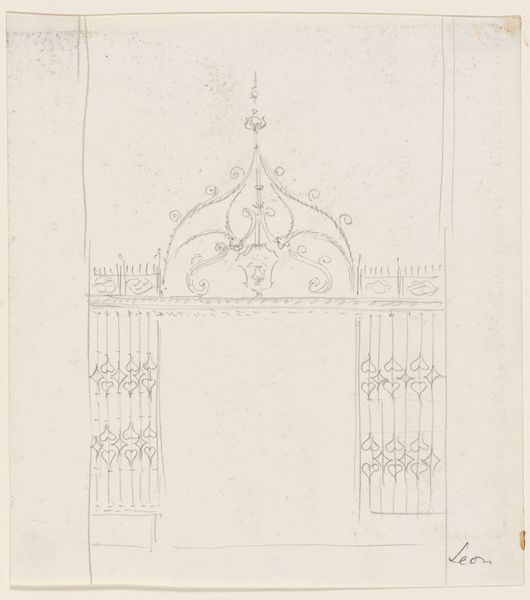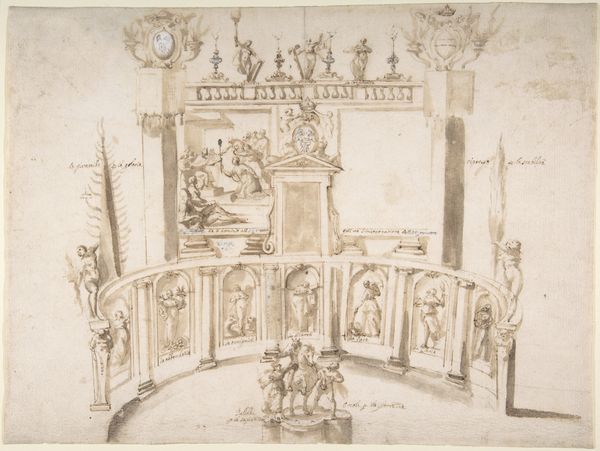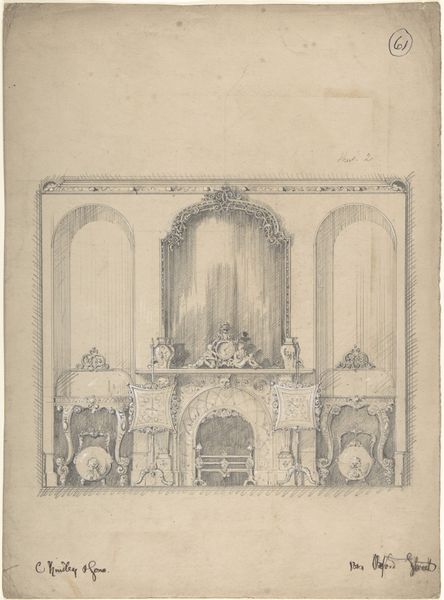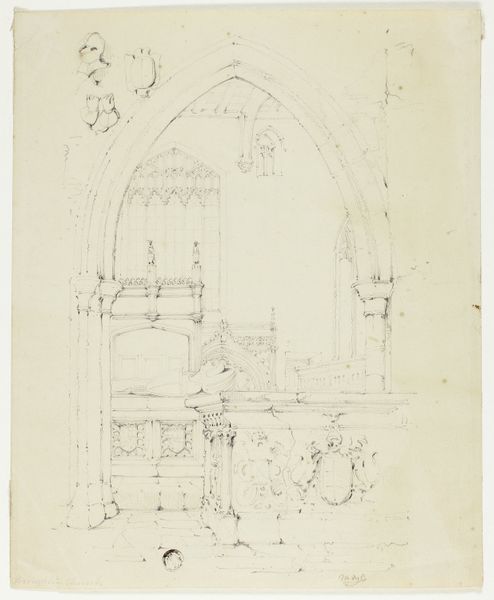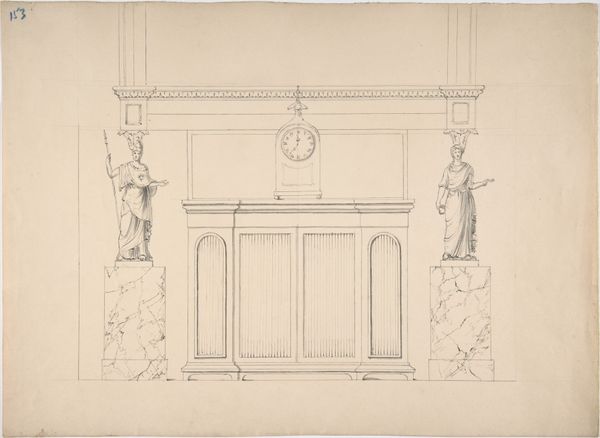
drawing, print, etching, architecture
#
drawing
#
baroque
# print
#
etching
#
landscape
#
etching
#
perspective
#
personal sketchbook
#
geometric
#
architectural drawing
#
cityscape
#
architecture
Dimensions: height 435 mm, width 358 mm
Copyright: Rijks Museum: Open Domain
Daniël Marot created this drawing, "Plattegrond en doorsnede van een poort voor een tuin", with pen in the late 17th or early 18th century. The artwork depicts architectural plans for an ornate garden gate and its surrounding structure, complete with classical motifs, sculptures, and figures in period clothing. Marot was a French-born designer who worked for royal clients in France, the Netherlands and England. He disseminated the Louis XIV style throughout Europe. In the context of the late 17th and early 18th centuries, garden design reflected broader cultural values related to the aristocracy and power. Formal gardens with elaborate gates were a means for the elite to display wealth, taste, and control over nature. The imposing structure also dictated who might enter the space, a way to control society and reinforce social hierarchies. To understand this drawing fully, we might research estate plans of the period, architectural pattern books, and social histories of garden design and ask, to what extent does this drawing reflect the conservative values of elite patrons or promote new ideas about the public role of art?
Comments
No comments
Be the first to comment and join the conversation on the ultimate creative platform.
